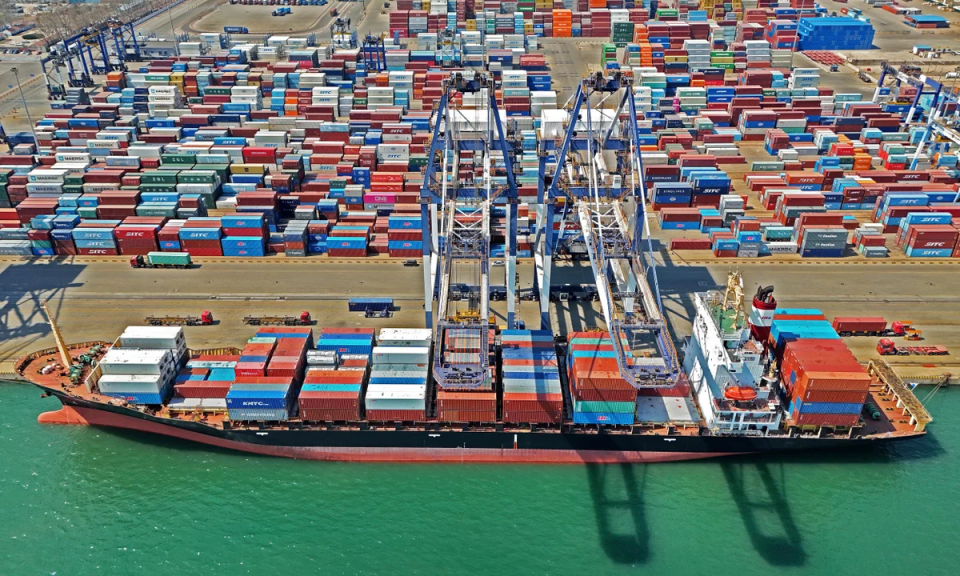The Port of Long Beach recently became the focal point of the ongoing U.S.-China trade dispute as the OOCL Violet, a massive Chinese container ship, unloaded its cargo under the shadow of President Donald Trump’s sharply increased tariffs. The new levies, which now reach as high as 145 percent on many Chinese goods, are already reshaping the landscape for American importers and global supply chains.
When the OOCL Violet docked in California, it carried thousands of containers filled with everything from consumer goods to industrial supplies. According to data compiled by IHS Markit and Bloomberg, the ship’s cargo had an estimated total value of $564 million. About 40 percent of that, or roughly $226 million, was subject to the new 145 percent tariff rate, resulting in at least $417 million in additional import duties for U.S. companies.
For importers like Worldlawn Power Equipment, based in Nebraska, the impact is immediate and significant. The company’s general manager, Tino Muratore, described the situation as uncertain, with businesses left to “figure out how to navigate this just like everybody else.” The sudden spike in tariffs left little time for companies to adjust their supply chains or pricing strategies before their goods arrived at U.S. ports.
The voyage of the OOCL Violet illustrates how quickly trade policy changes can ripple through global commerce. The ship began loading cargo in Dalian, China, at a time when most goods faced an additional 20 percent tariff, a rate that stemmed from concerns over China’s role in the fentanyl crisis. As the vessel made its way to Ningbo, new tariffs of 45 percent were imposed on cars and certain metals. By the time the ship departed Shanghai, the top tariff rate had jumped to 145%, adding an estimated $220 million in duties to the cargo’s cost.
This rapid escalation highlights the complexity of calculating tariffs. The final amount owed depends not just on the type of product and its origin, but also on the timing of when it left each port. For importers, this means navigating a constantly shifting regulatory environment, with little clarity on what the next shipment might cost.
The new tariffs, which President Trump has defended as necessary to address trade imbalances and other concerns, are expected to generate billions in revenue for the U.S. Treasury in the short term. However, these costs are ultimately borne by American companies, many of whom may pass them along to consumers in the form of higher prices.
Early data suggests the tariffs are already having a chilling effect on trade volumes. Some U.S. ports have reported a drop of up to 50 percent in exports, and the number of cargo ships arriving from China has fallen sharply in recent weeks. The uncertainty has left businesses scrambling to find alternative suppliers or adjust their logistics, with no clear indication of how long the current policy will remain in place.
While President Trump has hinted at the possibility of lowering tariffs as new trade talks with China get underway, there is little immediate relief in sight for importers facing the brunt of the new duties. The administration maintains that its policies are positioned to restore long-term economic health, citing rising investment and signs of cooling inflation. Yet, for companies with goods already in transit, the reality is a sudden and dramatic increase in costs, with ripple effects likely to be felt throughout the economy.
As the OOCL Violet’s cargo is processed and distributed across the country, the true impact of the 145% tariffs will become clearer. For now, American businesses are left to adapt to an unpredictable trade environment, hoping for stability as negotiations continue.

